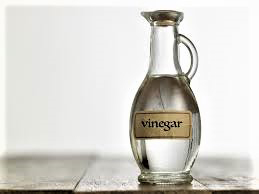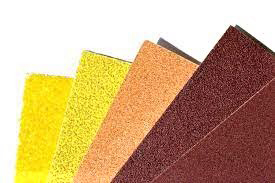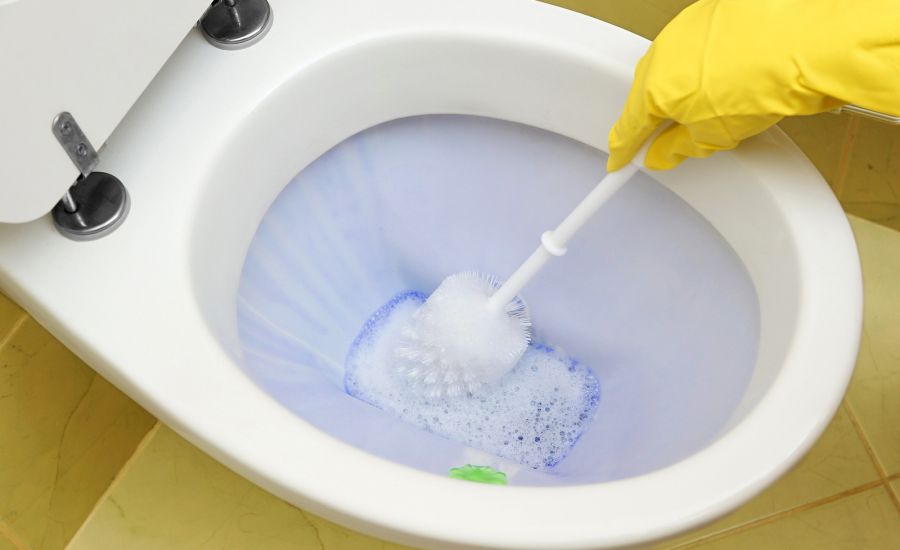Oh, the simple lavatory. The place where we go to relieve ourselves, not just of our physical demands, but also of the tension of the day. The toilet, our dependable buddy and pal, is a great respite from the stresses of everyday life. That is why we must take care of it. Limescale is a sneaky little thing that lives in water. It has a penchant for gripping our gorgeous white toilet bowl, resulting in an unsightly discoloration of the porcelain over time. That is why we have chosen to compile a list of dos and don’ts for removing limescale from your toilet.
What exactly is limescale?
First and foremost, before you confront the beast, you must understand what it is. Limescale is a cunning tiny creature. It is a hard, chalky deposit composed primarily of calcium carbonate (CaCO3). It frequently accumulates in kettles, hot water boilers, and pipes, particularly for hot water. Limescale accumulates in areas where “hard water” evaporates. After that, the limescale generally develops a strange color. The colors span from off-white through greys, pinks, and reddish browns. In addition to being difficult to remove and unappealing to the sight, it may cause significant damage to plumbing and heating components.
How NOT to Get Rid of Limescale
Cleaning misconceptions abound, as they do with all cleaning procedures. That is why we have tried and tested such techniques, and we are here to share the findings with you. The following are the two most common limescale removal misconceptions we’ve discovered:
- Bleach: Bleach is one of the finest companions a home can have. It is capable of removing stubborn stains, brightening darkish surfaces, disinfecting, and killing almost anything. So it’s natural why so many people believe it works. The fact is that it does not effectively remove limescale. It just lightens the discoloration. In this situation, the limescale is more damaging since you can’t see it and aren’t aware of it.
- Coca-Cola – This myth holds that putting a bottle of Coca-Cola into the toilet bowl and leaving it overnight would dissolve the limescale. The acid in the cola is supposed to dissolve the limescale. This test yielded disappointing findings for us. We only received a cola-colored limescale stain.
How Do You Get Limescale Out of Your Toilet?
Now that we’ve dispelled those fallacies, let’s look at some DIY methods for descaling your toilet. You will require the following items:
- Vinegar, white
- Sandpaper
That’s all! Here are our two limescale removal methods:
How to Get Rid of Limescale with Vinegar:

- Fill the basin with 1 litre of undiluted white vinegar. Make sure you get all of the toilet bowl’s sides.
- It’s now time to wait. Allow at least 3 hours for it to sit.
- Scrub the toilet bowl with a toilet brush or cleaning sponge soaked in additional white vinegar.
- Flush to get rid of any leftovers.
- Repeat till your toilet shines like new!
How to Remove Limescale using Sandpaper:

- We propose utilizing two types of sandpaper for this job: medium-grain and fine-grain.
- Begin by sanding the interior of the toilet with medium-grain sandpaper.
- Continue until the bulk of the limescale has been removed, being careful not to scratch the bowl.
- Begin buffing the interior of the toilet with the fine-grain cloth until the discoloration is entirely removed.
- Flush the toilet to remove any residue before cleaning it as normal.
At Dial Cleaning Services, we are experts in house cleaning in Quebec, Canada. So you can contact us to have a clean space and create a more pleasant climate in your company.
Call Us: 514.629.0841
Address: Montreal, Quebec, Canada
Mail Us: info@dialcleaningservices.com
You may also like:

